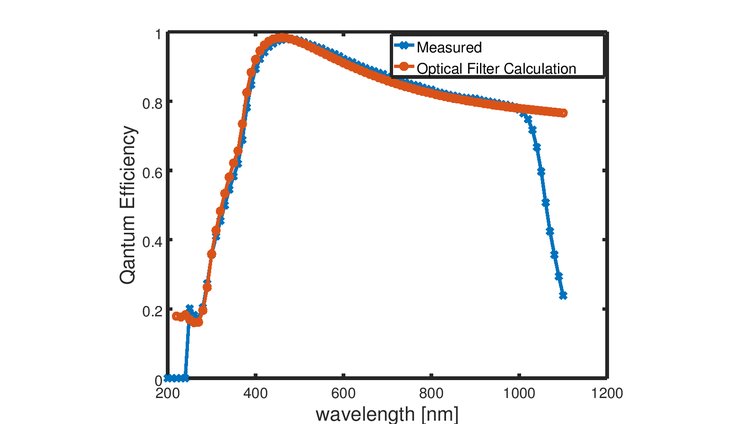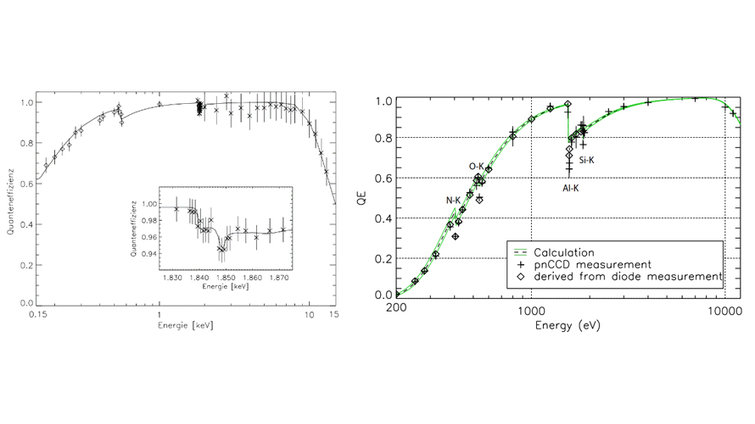Sensors at the limit
The sensors of the semiconductor lab detect electromagnetic and particle radiation. Both types of radiation interact with the silicon and generate charge within the silicon that consecutively has to be detected. In our developments, we are constantly trying to push the limits of our sensors, to become more sensitive, more accurate, faster and more versatile. In some cases we even try to do all at the same time.
Some of the Limitations and means to reach the physical Limits are:
Entrance Window
The entrance window is the border of the silicon located on the sensors backside. It is formed by an unobstructed shallow p-implant covered by a passivation layer of silicon-nitride and silicon-oxide respectively.
In the optical regime, this provides a high quantum efficiency (QE). By modifying the stack of the passivation layer, it is further possible to optimize the QE for one wavelength.
The quantum efficiency for X-ray photons has been measured in the calibration campaigns for XMM Newton [1] as well as eRosita [2]. Both curves are shown in figure 2 on the left and right respectively. The sensor for XMM-Newton had a bulk thickness of 300µm, limiting the QE in the high energy regime. For eRosita the bulk had a thickness of 450µm improving the QE for high energetic X-rays. In addition, a thin layer of aluminum was deposited onto the passivation layer to provide shielding from optical photons. This reduces the sensitivity to optical photons by up to 6 orders of magnitude [2], while only having minor effect on the QE for low energy X-ray photons.
Contrary to electromagnetic radiation that generates point like charge clouds, particle radiation generates tracks of charge within the silicon. For high energetic particles the entrance window is thus not as crucial. However, low energetic particles that have a short range within the sensitive volume also require a thin entrance window to guarantee an accurate detection.
References:
1) L.Strüder et al., „The European Photon Imaging Camera on XMM-Newton: The pn-CCD Camera”, A&A 365, L18, 2000
2) S. Ebermayer et al., “Quantum efficiency measurements of eROSITA pnCCDs”, Proc. SPIE 7742, 2010

